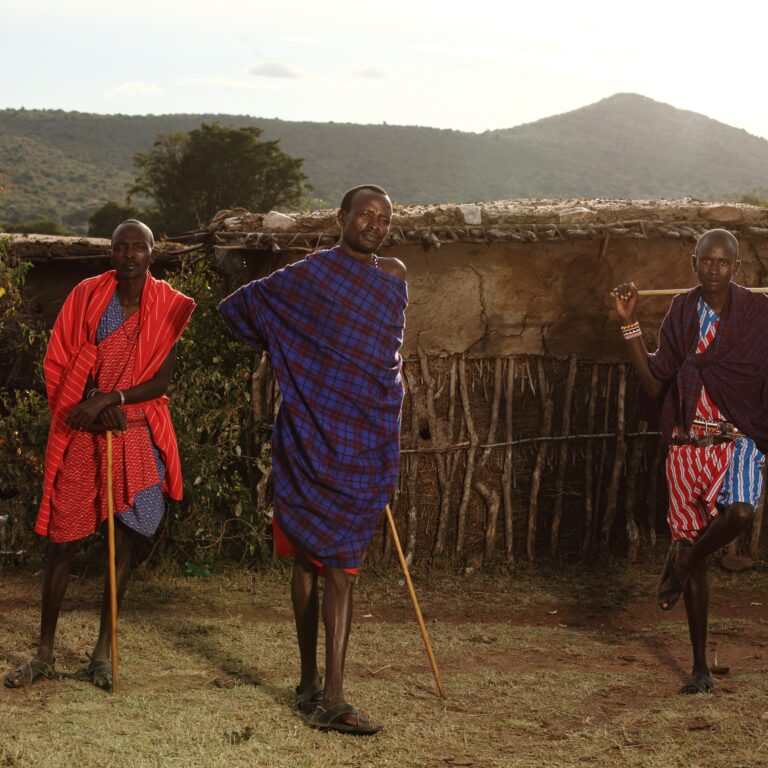Gazelles vs Antelopes - what is the difference?
The primary difference is that all gazelles are antelopes, but not all antelopes are gazelles. Gazelles are a specific type of small, fast, and graceful antelope, distinguished by their light, fawn-colored coats, distinct facial and flank markings, and the characteristic vertical leaps called stotting. Antelopes, as a broader family of ruminants, vary widely in size, shape, horns, and habitat, from the giant eland to the tiny royal antelope. Across the sun-drenched plains of Africa, two graceful silhouettes dance in the dust, their horns catching the glint of the sun. Antelope vs Gazelle. But are they antelopes, or gazelles? Though often mistaken for each other, these swift herbivores boast unique features and occupy distinct ecological niches. Let’s dive into the world of these speedsters and uncover the fascinating differences between antelopes and gazelles.
Features & Size Gazelles vs Antelopes
Antelopes: This diverse family encompasses over 130 species, ranging from the mighty eland to the miniature dik-dik. They vary in size and horn structure, but most possess long, slender legs and powerful bodies built for sustained running.
Gazelles: Part of the antelope family, these slender beauties are known for their lyre-shaped horns and elegant leaps. The Thomson’s gazelle, for example, stands barely knee-high, while the majestic dama gazelle reaches the size of a small deer.
Speed & Agility Gazelles vs Antelopes
Antelopes: While renowned for their endurance, not all antelopes are speed demons. Springboks, with their incredible bouncing gait, can reach speeds of 50 mph, while the pronghorn antelope of North America clocks in at a blistering 60 mph. However, larger species like kudus prioritize strength and agility over pure speed.
Gazelles: Built for quick bursts of speed and nimble turns, gazelles are the Formula One racers of the grasslands. The Thomson’s gazelle can outrun most predators over short distances, reaching speeds of 40 mph, while the slender Grant’s gazelle is known for its impressive jumping abilities.
Comparison & Interesting Facts Gazelles vs Antelopes
Diet: Both antelopes and gazelles are herbivores, grazing on grasses, leaves, and fruits. Some species, like the gerenuk, have specialized adaptations like elongated necks to reach higher foliage.
Predators: Lions, leopards, hyenas, and wild dogs are major predators of both antelopes and gazelles. Their survival hinges on superior vigilance, speed, and group cohesion.
Social Behavior: While some antelopes are solitary, many live in herds for protection and communication. Gazelles, in contrast, tend to form large, mixed-species herds that provide additional eyes and ears against predators.
Conservation Status: Several antelope and gazelle species face threats from habitat loss, hunting, and competition with livestock. Conservation efforts are crucial to ensure their continued existence on the African savanna.
Adaptations Gazelles vs Antelopes
Horns: Both antelopes and gazelles use their horns for defense, fighting for mates, and establishing dominance. Gazelle horns tend to be more curved and lyre-shaped, while antelope horns can be straight, spiral, or lyre-shaped, depending on the species.
Hoof Morphology: Sharp hooves provide traction on rocky terrain and aid in running, crucial for escaping predators. Some antelopes, like the saiga, have broad hooves adapted for navigating soft desert sand.
Sensory Adaptations: Keen eyesight and hearing allow both antelopes and gazelles to scan their surroundings for predators and navigate their complex ecosystems. Some species even have specialized glands for marking territory and communicating with each other.
The Verdict: Gazelles vs Antelopes
Antelopes and gazelles may appear similar at first glance, but their unique features, size variations, and ecological roles set them apart. With their diverse adaptations and breathtaking agility, both of these magnificent creatures enrich the tapestry of African wildlife. While the antelope family boasts remarkable diversity, the gazelle stands out as a subfamily specialized for graceful speed and survival in the face of constant threats. So, the next time you witness these majestic herbivores leaping across the plains, remember the intricate differences that make them so special, each playing a vital role in the symphony of the African savanna.
Gazelle vs antelope vs impala
Secondly, in most species of gazelles, both male and female animals have horns. For example, with impalas, only males have horns. That’s why an impala is an antelope, but not a gazelle. Another difference between gazelles and other antelopes is that only gazelles tend to display a behaviour known as stotting.
Grant gazelle vs Thomson’s gazelle
Grant’s gazelle and Thomson’s gazelle are both native to East Africa but differ in size and behavior. Grant’s gazelle is larger, with a more robust build and longer horns, while Thomson’s gazelle is smaller and more agile. Thomson’s gazelle is known for its speed and commonly forms larger herds, whereas Grant’s gazelle tends to be more solitary. Both species are prey for predators like lions and cheetahs, but have unique adaptations for survival.
Gazelle vs antelope vs deer?
Going down the taxonomical hierarchy, Deer belong to the family Cervidae (family of deer), while Antelopes or gazelles belong to the family Bovidae (family of cattle, sheep, water buffalo, and bison). While the male deer (and female reindeer) grow and shed new antlers each year, Antelope is permanently horned. What is different between an Antelope, a deer, and a gazelle? Antelopes, deer, and gazelles are all ungulates (hoofed mammals) with similar appearances, but they belong to different families and have some key differences. Deer belong to the family Cervidae, while antelopes and gazelles belong to the family Bovidae. A key difference lies in their headgear: deer have antlers that are shed and regrown annually, while antelopes and gazelles have permanent horns. Additionally, gazelles are a type of antelope, specifically a smaller genus within the antelope family.
Springbok vs impala vs gazelle
Springboks can reach a height of 85 cm and a weight of 40 kg. Horns are present on both sexes. Impalas are antelopes, but they are not gazelles, which is perhaps contrary to intuition. Even though they weigh between 40 and 80 kg, they are not regarded as gazelles despite being comparatively small.
Gazelle vs impala
The main difference between a gazelle and an impala is that gazelles are a group of related antelopes, while impalas are antelopes but don’t belong to the large taxonomic group known as gazelles. Gazelles and impalas are two animals that most people can recognize right away.
Gazelle vs Impala speed
Antelope Gazelles: Speed demons of the plains, leaping over danger at 40 mph. Gazelles dance in a blur, twisting and turning, leaving predators breathless in their dust.
Impala, Gazelle Cousin: Born to outrun, an impala’s heart beats for speed. Hitting 80 mph in bursts, these agile athletes fly across savannas, a graceful escape across golden grasslands.
They may graze on the same blades, but when danger calls, their hooves whisper different symphonies of speed. Gazelles weave, impalas fly – both masters of outrunning the shadows in the dance of survival.
Men, gazelles vs antelopes, what is the difference
Male gazelles and antelopes are both members of the Bovidae family but differ in species and behavior. Gazelles are typically smaller, known for their agility and speed, and are often found in grasslands. Antelopes, a broader group, include a variety of species with varying sizes and habitats. While male gazelles are often more prominent in social hierarchies, antelopes exhibit more diverse behaviors, from solitary to herd-living species. Both are herbivores and prey to large carnivores.
Gazelle vs springbok
The primary distinguishing features of Thomson’s gazelles and springboks are their horns. The springbok’s horns grow upwards before curving inwards towards the midline of the head, while those of Thomson’s gazelles grow upwards and then curl slightly backwards.
Some animals look like they have walked straight out of a sci-fi movie, which is fascinating. Now you can carry Enamel Keychains with you that can be added to the little animals you are obsessed with or to your keychain style.
These keychains are more than just accessories that can be hung on bags and items. They are a celebration of the weird and wonderful things in nature and an expression of your love for things. Imagine taking your personality traits to the next level with a keychain designed with your favorite critter. Whether it’s an outdoor group or a wildlife conservation club event, a custom keychain can bring that wild charm into your daily life.
Which is faster, antelope or a gazelle?
In general, gazelles are often faster than antelopes, though both are known for their speed. Gazelles are known for their agility and grace, while antelopes vary in speed depending on the species. For example, the springbok antelope can reach speeds of up to 55 mph (88 km/h), while some gazelles, like the Thomson’s gazelle, can reach a top speed of 50 mph (80.5 km/h). These species have a larger body, but that does not mean that they are not as quick as gazelles; however, their diet differs slightly, as some species of antelopes like to feed on small birds, mammals, and insects.
Are gazelle and Impala the same thing?
No, gazelles and impalas are not the same thing. While both are types of antelopes, they belong to different genera. Impalas are a species of antelope in the genus Aepyceros, while gazelles are a group of antelope species within the genus Gazella. Belong to the genus Gazella and encompass a variety of species. They are generally smaller and more slender than impalas. While impalas and gazelles are both species of antelopes, they are not the same animal. Impalas belong to the genus Aepyceros, and gazelles belong to the genus Gazella. There are 17 distinct species of gazelle, but just one species of impala.
Is a springbok a gazelle or an antelope?
A springbok is an antelope, but it’s also closely related to gazelles and sometimes considered a type of gazelle-like antelope. While the springbok is classified within the antelope family (Bovidae) and the subfamily Antilopinae, it is in the genus Antidorcas, which is distinct from the genus Gazella.
What is the difference between an antelope and a gazelle?
Antelopes and gazelles are both ruminants with hollow, unbranched horns, but gazelles are a genus of antelopes. This means gazelles are a specific group within the broader category of antelopes. The key differences lie primarily in size, horns, and behavior. Gazelles are generally smaller and lighter than many other antelopes. For example, a Thomson’s gazelle weighs around 55 lbs (25 kg), while an eland can weigh over 950 kg (2,100 lbs).
In most gazelle species, both males and females have horns, whereas in many other antelope species, only males have horns. Gazelles are known for stotting, a behavior where they leap vertically in the air before running when alerted by a predator. Gazelles are often found on open plains, while other antelopes can be found in a wider variety of habitats, including forests and bush country. Antelope is the broader family (Bovidae) that includes gazelles and other animals like impalas, oryx, and waterbucks. Gazelles are a genus (Gazella) within this family.
What is the relationship between antelopes and gazelles?
Gazelles are a specific type of antelope. Antelopes are a broader group of mammals, while gazelles are a genus within that group. Therefore, all gazelles are antelopes, but not all antelopes are gazelles. Think of it like a family tree: antelopes are the family, and gazelles are a specific branch or group within that family. Antelopes: A large family of ungulates (hoofed mammals) belonging to the Bovidae family, which also includes cattle, goats, and sheep. Gazelles: A specific genus within the antelope family, known for their graceful appearance, agility, and often having ring-shaped horns. Relationship: Gazelles are a subfamily (Antilopinae) of antelopes. Other antelopes include species like impalas, oryx, waterbuck, and eland.
What animal is faster than an antelope?
The cheetah is faster than an antelope, holding the title of the fastest land animal. It can sprint up to 70 mph in short bursts, far surpassing the antelope’s top speed of around 55 mph. With a lightweight frame, powerful muscles, and a long tail for balance, the cheetah is built for explosive speed. While antelopes rely on endurance and agility to evade predators, they often struggle to outrun the cheetah’s incredible acceleration and pace.
Antelope vs Gazelle: Features, Speed & Size Comparison
Antelopes and gazelles, both agile herbivores, differ subtly. Antelopes, a broader group, vary widely in size and build, while gazelles are smaller, sleeker, and more delicate. Gazelles reach speeds up to 60 mph, slightly outpacing most antelopes. Antelopes range from 40 to 60 inches tall; gazelles are generally shorter. Though both boast impressive speed and grace, gazelles are more specialized for sprinting, whereas antelopes exhibit a wider diversity in form and function.
Pronghorn vs gazelle speed
Pronghorns are generally faster than gazelles, both in top speed and sustained speed. Pronghorns can reach speeds of up to 60 mph (97 km/h), and can maintain speeds of 40 mph (64 km/h) over long distances (11 km or 7 miles). Gazelles, while swift, typically reach speeds of 40 mph (64 km/h) or 55 mph (88 km/h).
What is the fastest antelope in the world?
The world’s fastest species of true antelope is Asia’s goitered gazelle (Gazella subgutturosa), which has been clocked running at 97 kilometres (60 miles) per hour. Africa’s springbok (Antidorcas marsupialis), which attains speeds of up to 88 kilometres (55 miles) per hour in short bursts, is a close contender. These remarkable speeds are often highlighted in wildlife video content, showcasing their agility and survival tactics in the wild.
Are there gazelles in America?
No, gazelles are not native to North America. While gazelles are found in Africa and Asia, and are known for their graceful movements and speed, they are not part of the North American wildlife. The North American pronghorn antelope looks and acts much like a gazelle, but it belongs to a separate family, the Antilocapridae. The Great Plains gazelle (Eudorcas americanum), also known as the American prairie gazelle, is a species of antelope that originally did not exist, but has since been created by SciiFii and introduced to the grasslands, scrublands, open prairies, and open woodlands across North America to help biodiversity.
Gazelle vs antelope vs impala size
Antelope is a broad category of hoofed mammals, with sizes ranging from the tiny Royal Antelope (about 4 lbs) to the massive Eland (up to 1,800 lbs). Gazelles are generally smaller antelopes, typically 2-3.5 feet at the shoulder and 26-100 lbs, though size varies by species. Impalas are medium-sized antelopes, usually 2.5-3 feet tall at the shoulder and weighing 88-167 lbs.








